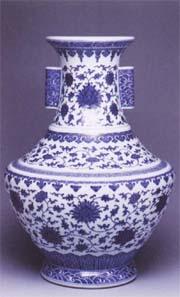About
University of Tsukuba Gallery
University of Tsukuba Gallery exhibits selected historical materials and art works related to the university. This gallery aims to disseminate information on the university's activities to society and offer a place for exchanges. The gallery includes exhibitions related to the Nobel laureates, Olympic athletes, laboratory schools, and art works presented by Mr. ISHII Akira.
*Photography is prohibited in the gallery.
University of Tsukuba Gallery Pamphlet

Open: Monday-Friday, 9:00-17:00 (except national holidays, year-end and New Year holidays)
Inquiry: Office of University Hall (TEL:+81.29.853.7959)
Access: Take the "Tsukuba Daigaku Junkan (University of Tsukuba Campus Circular)" bus (clockwise/counter-clockwise) at Tsukuba Center Bus Stop No. 6 and get off at Daigaku Kaikan Mae
When you drive to our campus, please use the visitor's parking lot.
However, please note that parking is only permitted when visiting the Gallery.


For groups traveling by microbus, etc., please inform us of the date, time, and number of visitors at least two weeks in advance via the following method, as parking arrangements may need to be made.
Contact: somu-daigakukaikan#@#un.tsukuba.ac.jp
* Please replace "#@#" with "@".
Invitation to the University of Tsukuba

Seizing the opportunity provided by the relocation to the Tsukuba area of its predecessor, the Tokyo University of Education, to the Tsukuba area, the University of Tsukuba was established in 1973 based on new educational concepts; "New educational and research system", "New university autonomy", and "Open university". The university's history dates back to its founding as a Normal School in 1872.
This exhibition room exhibits historical materials to familiarize people with the university's history and tradition.
TOMONAGA Memorial Room
Dr. TOMONAGA Sin-itiro Memorial Exhibition
Dr. TOMONAGA Sin-itiro was born in 1906. He engaged in the physics of elementary particles in the earliest days at the Tokyo University of Education. During the Second World War, Dr. TOMONAGA developed the super-many-time and renormalization theories and unraveled interactive nature between the motions of electrons in the magnetron. In 1965, he was awarded the Nobel Prize in Physics for this achievement. From 1956 to 1962 he served as President of the Tokyo University of Education. He also served as President of the Science Council of Japan and Director of the Institute for Optical Research. Researchers who received Dr. TOMONAGA's guidance developed physics research and the research genealogy was succeeded by the University of Tsukuba.
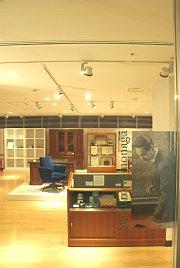
SHIRAKAWA Memorial Room
Dr. SHIRAKAWA Hideki Memorial Exhibition
Dr. SHIRAKAWA Hideki was awarded the Nobel Prize in Chemistry for the discovery of conductive polymers in 2000. In his boyhood, he took an interest in nature and developed the affinity for science. Dr. SHIRAKAWA found that, when a trace of a halogen such as bromine or iodine is added to thin film polyacetylene, its electric conductivity increases and it exhibits metallic conductivity. By various spectroscopic measurements and evaluations of the physical properties of polyacetylene, he clarified that partial electron transfer between dopants and p-electrons of polyacetylene can generate metallic conductivity.
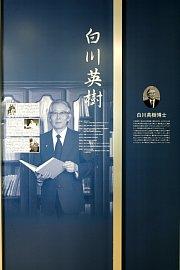
Dr. ESAKI Leo Memorial Exhibition
ESAKI Leo was awarded the Nobel Prize in Physics in 1973 for his discovery of tunneling in semiconductors. Dr. ESAKI's discovery led to the creation of the Esaki diode, an important component of solid state physics with practical applications in high-speed circuits found in computers and communications networks. In 1992, he returned from U.S.A. and accepted an appointment as president of the University of Tsukuba. He dedicated himself to the establishment of a new university.
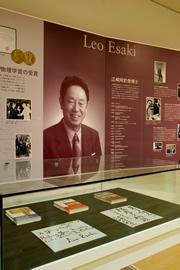
Dr. AKINO Yutaka Exhibition
Dr. AKINO Yutaka lost his life in the Republic of Tadjikistan in 1998 when he was working as an U.N. political officer. He traveled throughout the Eurasian Continent after the Cold War and made policy proposals for the stability of the region as a scholar of international politics. Dr. AKINO's sportsmanship and devotion to the next generation education still inspire young people and have an impact on them.
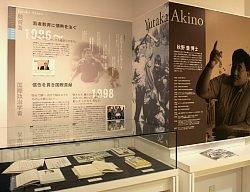
Laboratory Schools Exhibition
The University of Tsukuba has eleven laboratory schools and is the only university in Japan that has the full range of laboratory schools made up of elementary, junior high, and high schools and special needs schools.

P.E. and Sport Exhibition
The University of Tsukuba has produced many athletes during a long history. This P.E. and Sport Exhibition introduces activities of the first Olympic athletes, Olympic athletes who holds the largest number of medals in Japan, leading Olympic athletes, and athletes in various kinds of sports.

University of Tsukuba Art Collection - Gifts of Mr. ISHII Akira
The University of Tsukuba received paintings, print arts, and ceramics as gifts from Mr. ISHII Akira (President of Toshokan Ryutsu Center) in 2005. Part of these donated art works are exhibited regularly in this colection exhibition room for educational and research purpose. We welcome all visitors and hope you enjoy the beauty of these art works.
